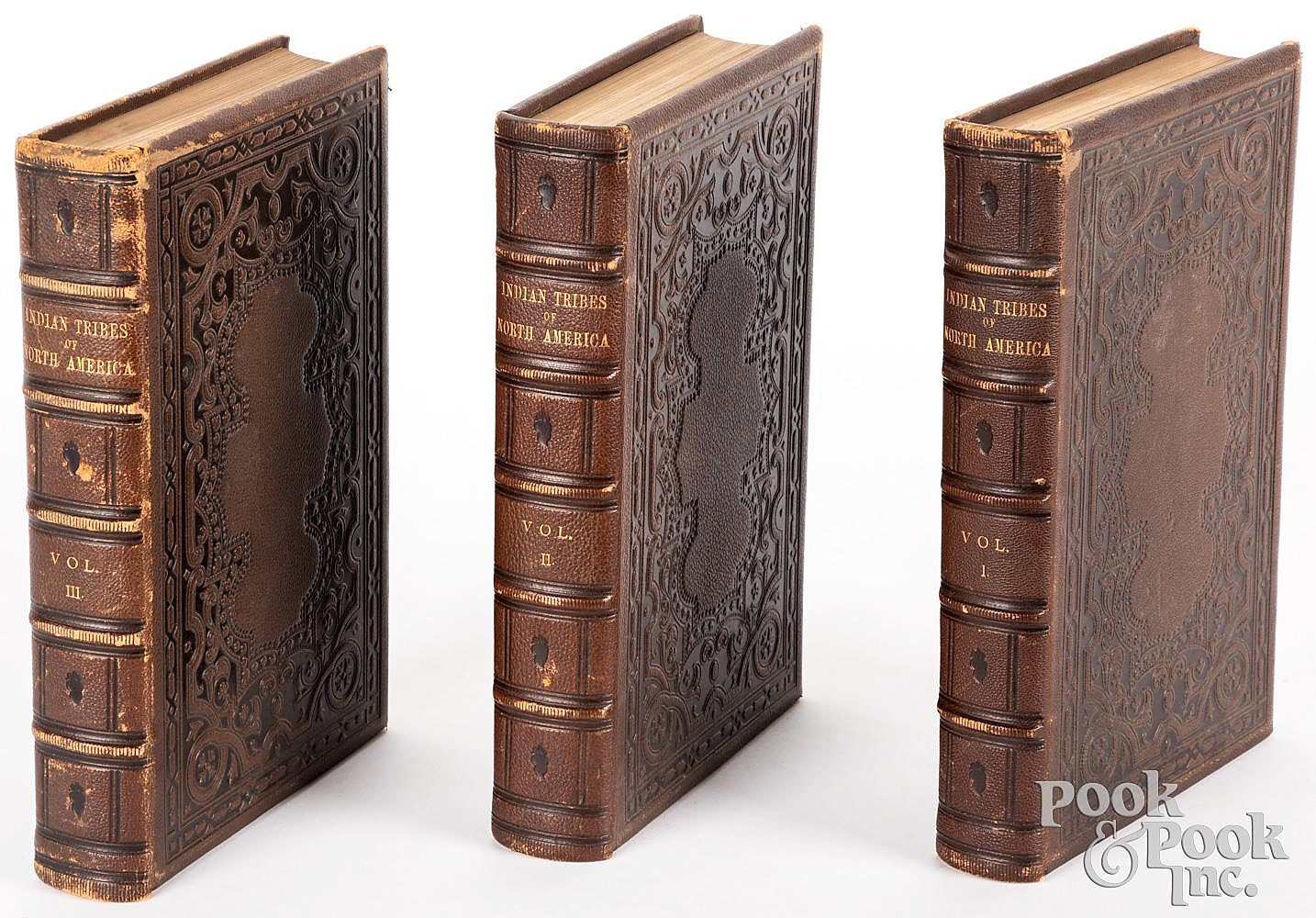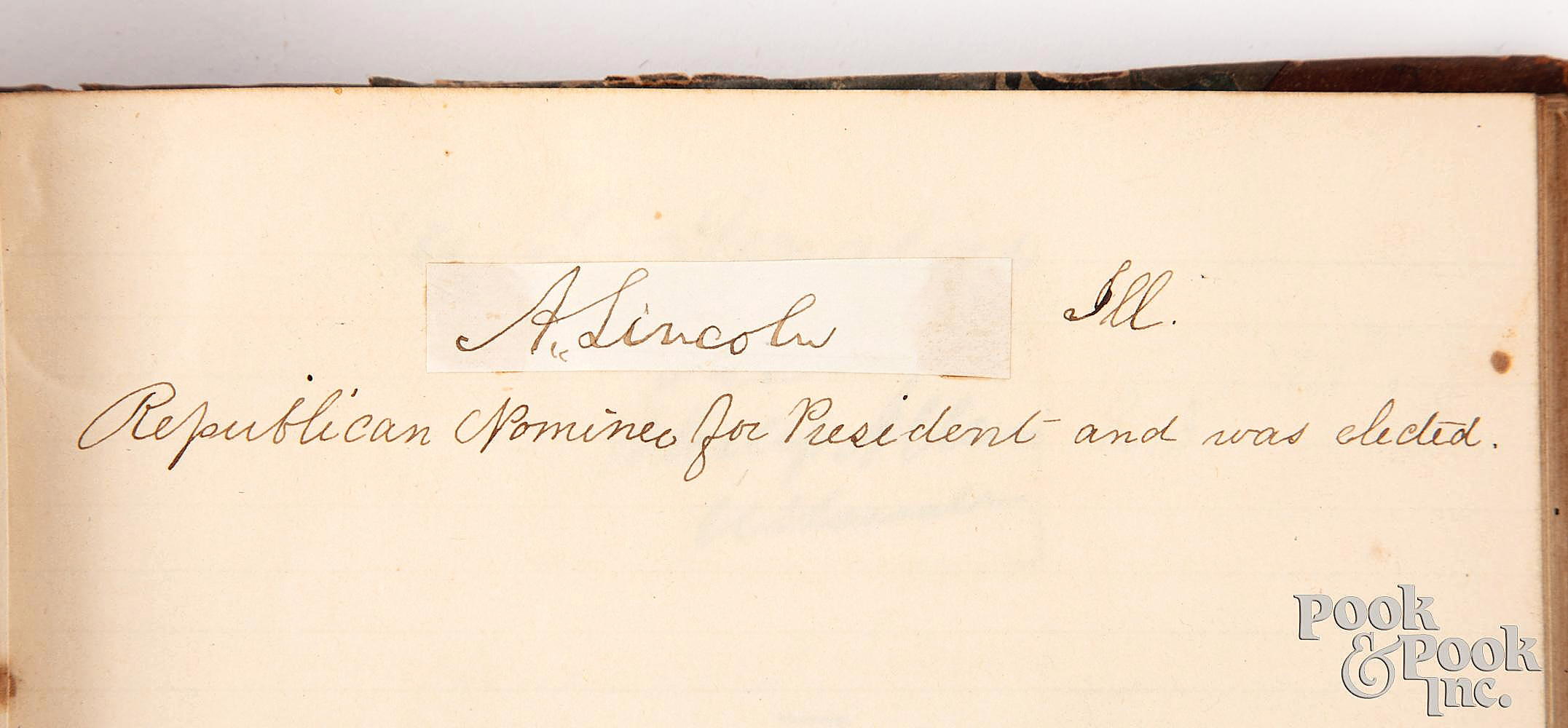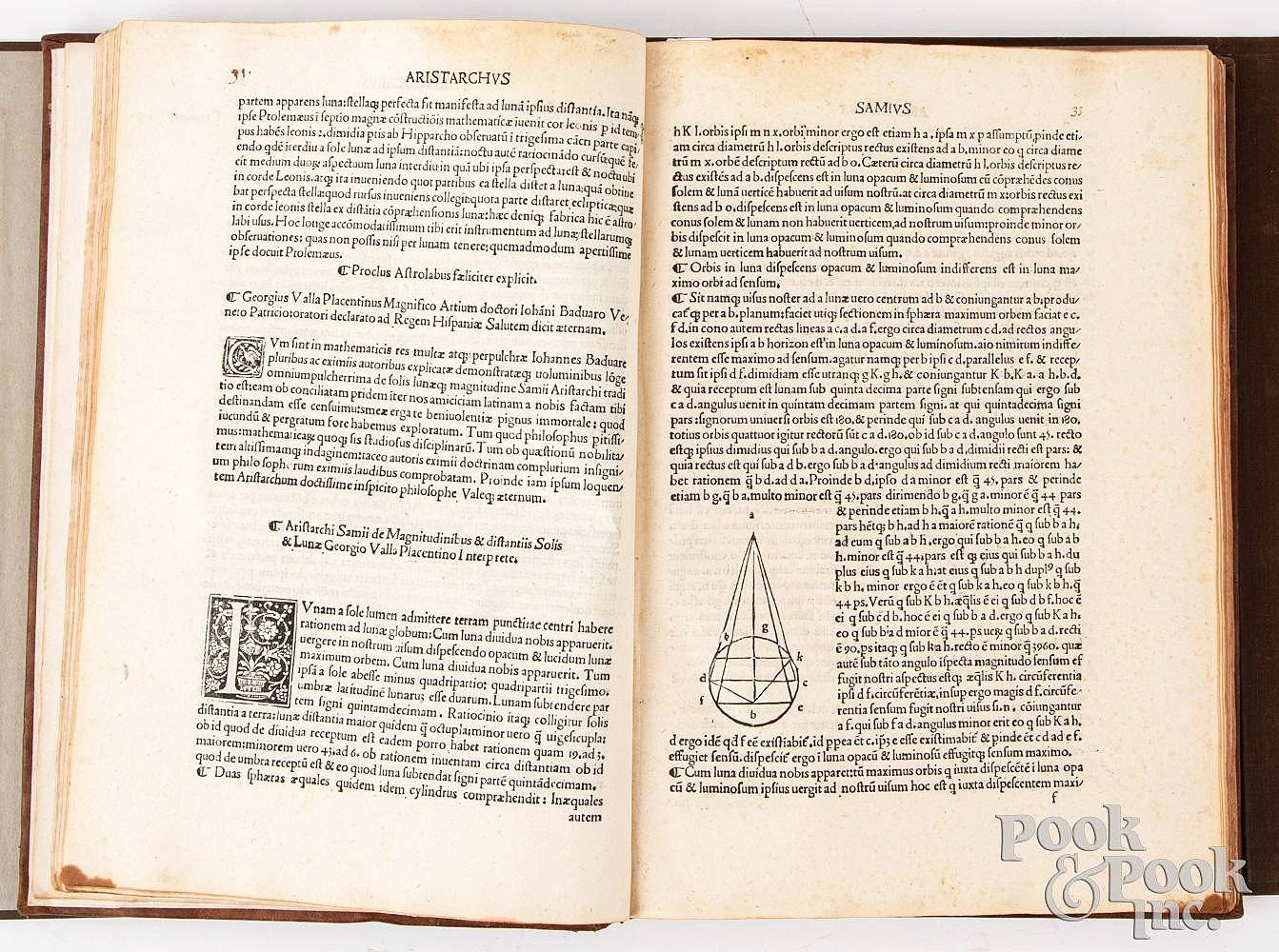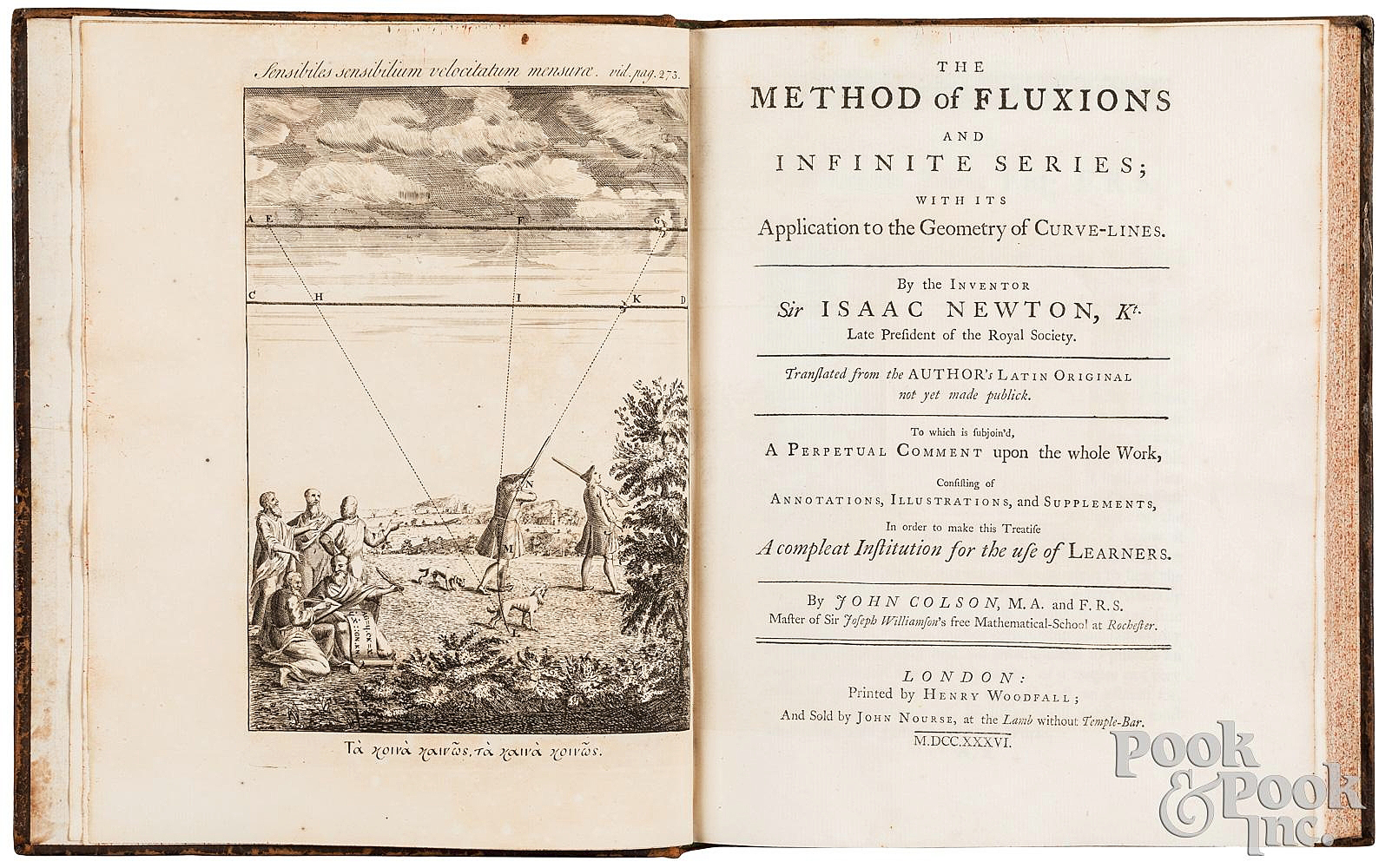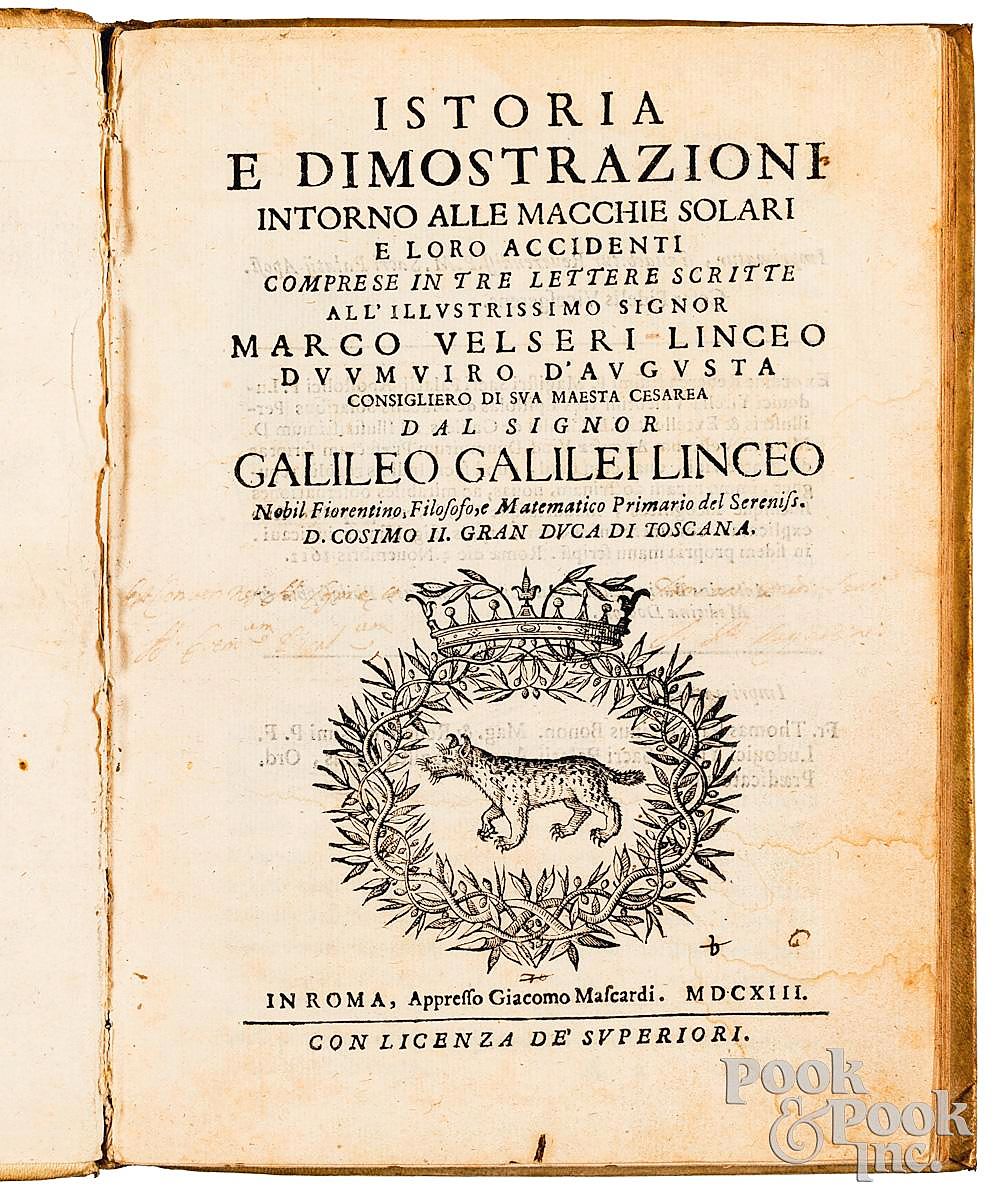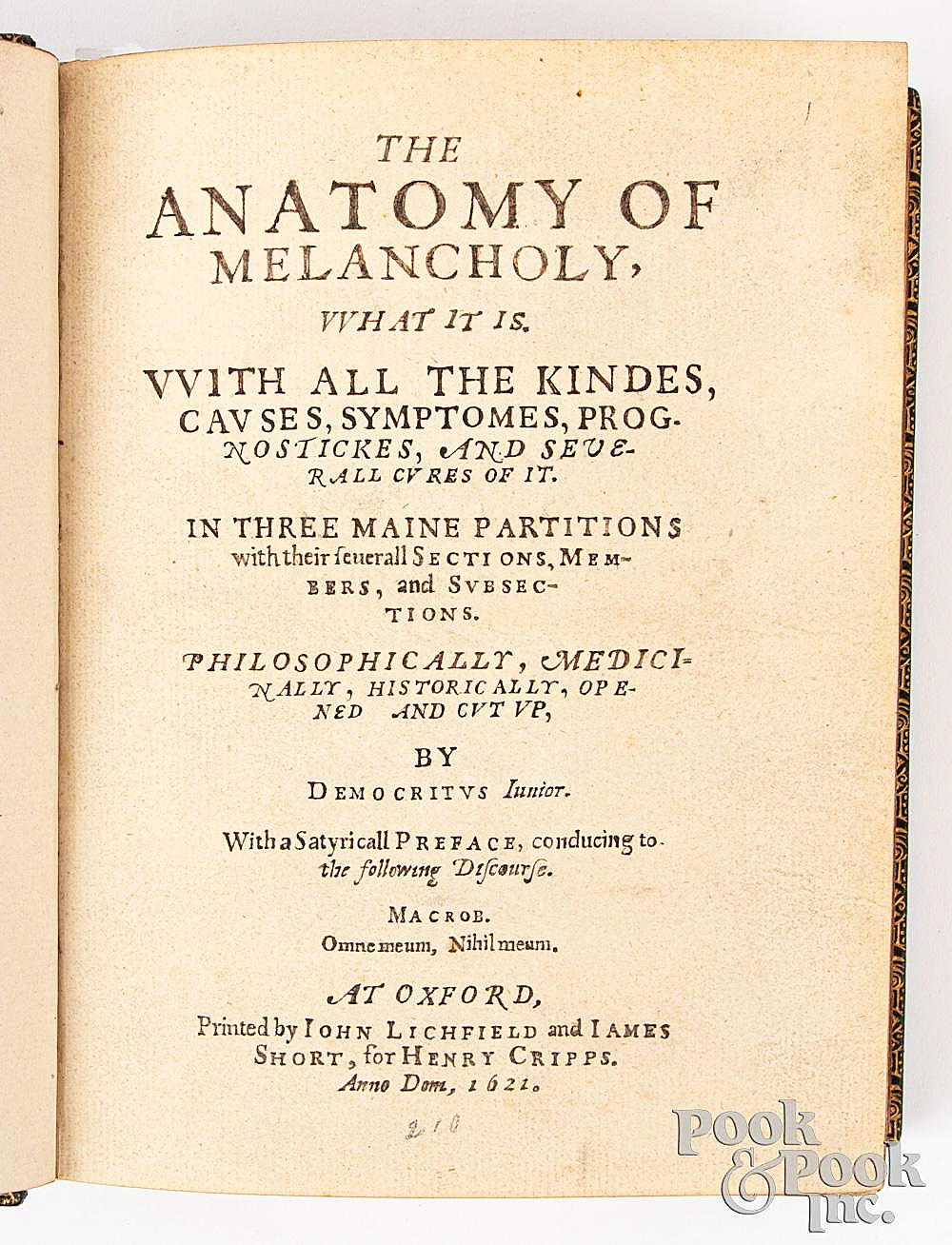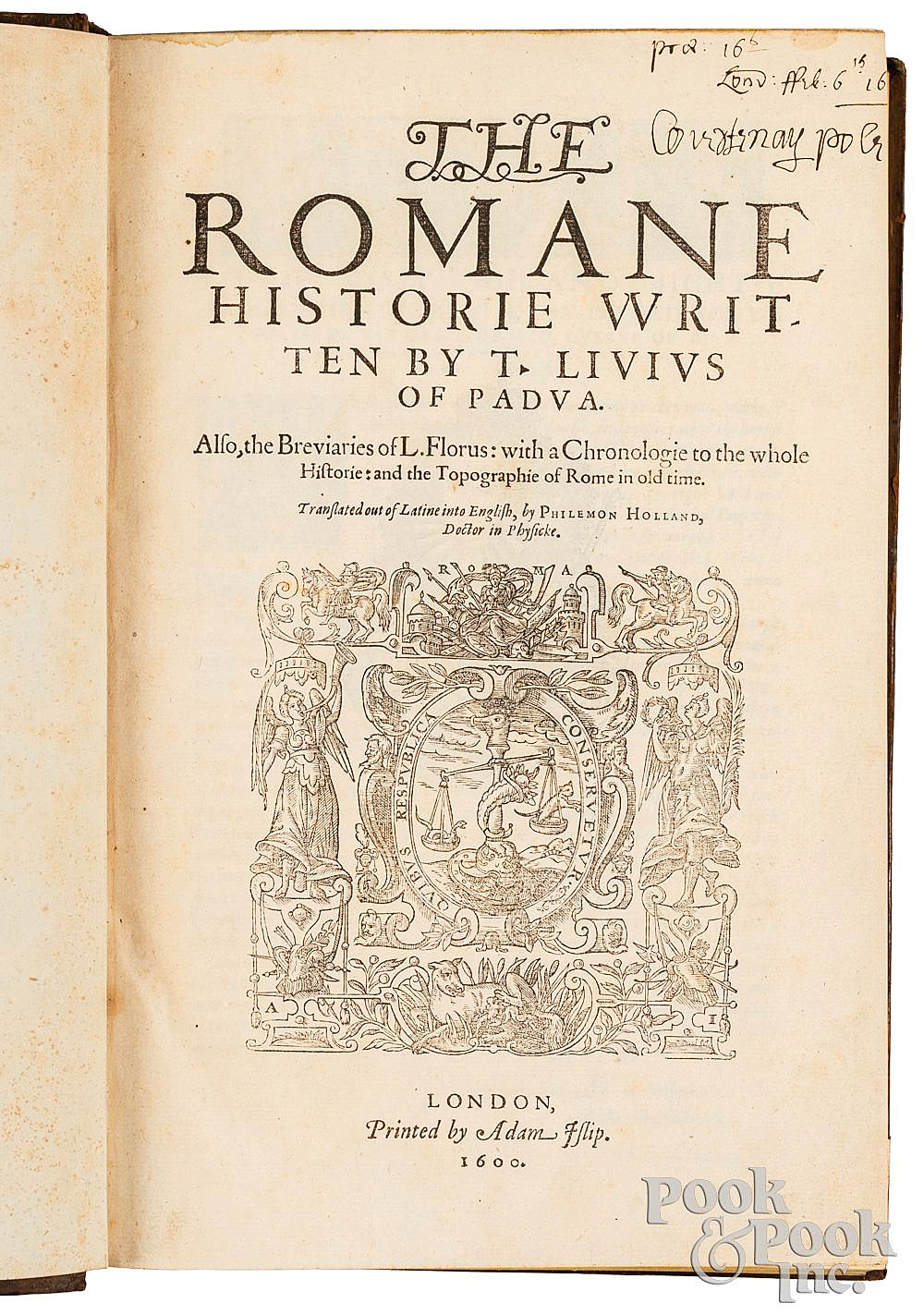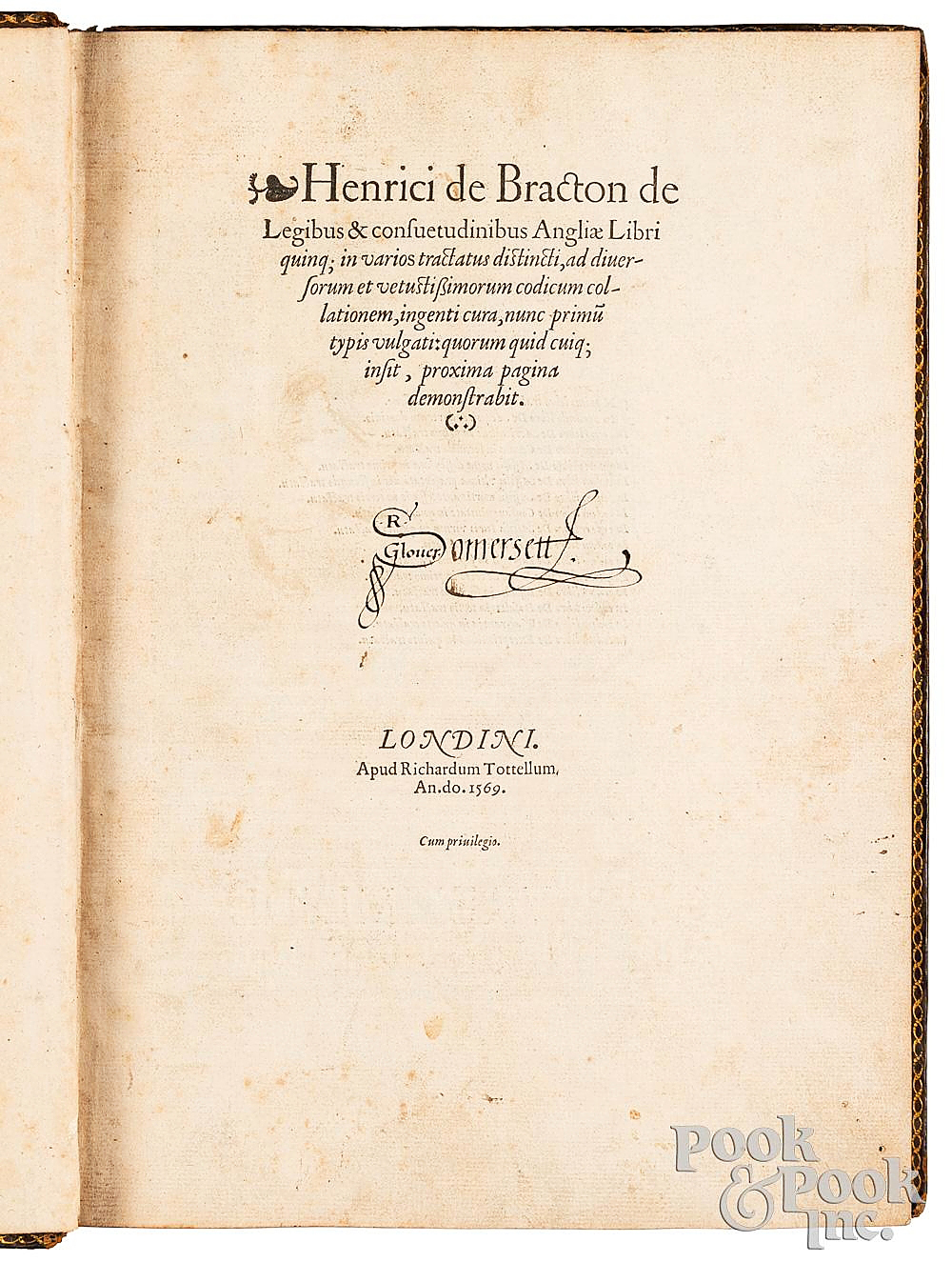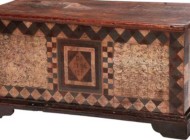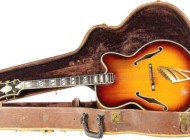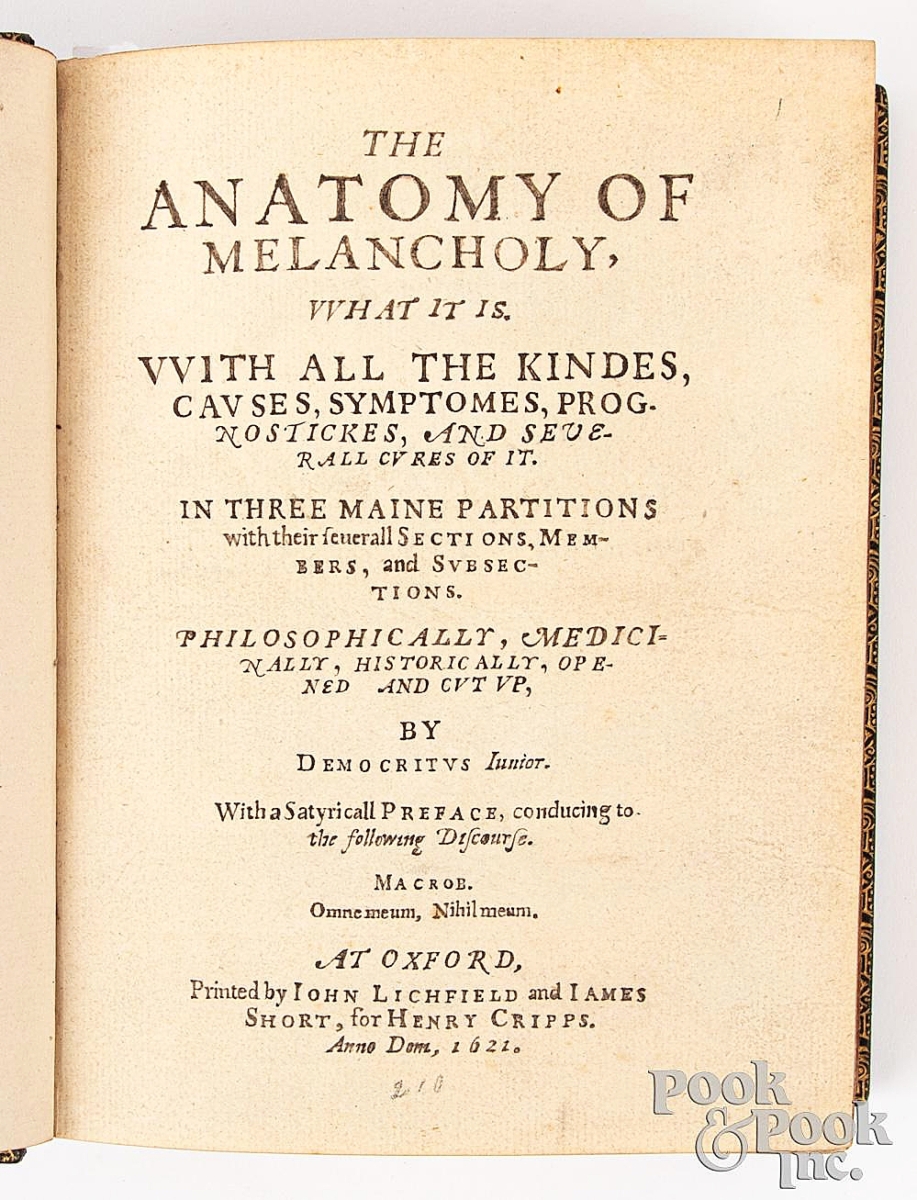
Estimated just $4/6,000, Robert Burton’s (English, 1577-1640) The Anatomy of Melancholy, 1621, a medical textbook that was both scholarly and satirical, was the top lot, bringing a healthy $57,960 from the trade. The first edition, printed at Oxford by John Lichfield and James Short, for Henry Cripps, 1621, became one of the most popular books of the Seventeenth Century and is still an influential work in the study of mental illness and depression.
Review by W.A. Demers, Photos Courtesy Pook & Pook
DOWNINGTOWN, PENN. – Rare books led the day at Pook & Pook’s sale of photography, prints and ephemera, a 450-lot auction conducted August 17. Estimated just $4/6,000, Robert Burton’s (English, 1577-1640) scholarly and satirical medical textbook of 1621 was the top lot, bringing a healthy $57,960.
The first edition of The Anatomy of Melancholy by Burton, printed at Oxford by John Lichfield and James Short, for Henry Cripps, 1621, was subtitled What It Is, With All the Kindes, Causes, Symptomes, Prognostickes, and Several Cures Of It and was bound in dark green leather with gilt bordered boards and gilt spine, gilt edges and marbled endpapers. Stemming from the collection of Dr Fin Sparre, Wilmington, Del., the tome addresses what today might be characterized as clinical depression and takes the reader on an encyclopedic tour of topics as far ranging as digestion, goblins and American geography. It became one of the most popular books of the Seventeenth Century and is still an influential work in the study of mental illness and depression. Sparre was director of development at E.I. du Pont de Nemours & Company. The top eight selling lots in this auction were from his collection.
There were 441 lots sold out of 450 offered for a 98 percent sell-through. The sale totaled $346,156. There were 463 approved bidders on PookLive; 644 approved bidders on Bidsquare and 101 successful bidders on Invaluable. A total of 63 percent of the sale sold to Bidsquare/PookLive, while 37 percent of the sale went to Invaluable bidders, 5,951 of whom were approved.
Fetching $37,800, a first edition of Georgio Valla Placentino Interprete, containing numerous translated Greek scientific texts, included the first printing of the only extant work of the Greek astronomer Aristarchus of Samos (circa 310-230 BCE), titled de Magnitudinous et Distantilis Solis et Lunae. Aristarchus is considered to be the first man to have proposed a heliocentric theory, 18 centuries before Copernicus. Other entries include Aristotle’s Magna Ethica and Ars Poetica, Rhazes De Pestilentia, and several medical treatises by Galen. The book was bound in embossed brown leather with a protective slip case.
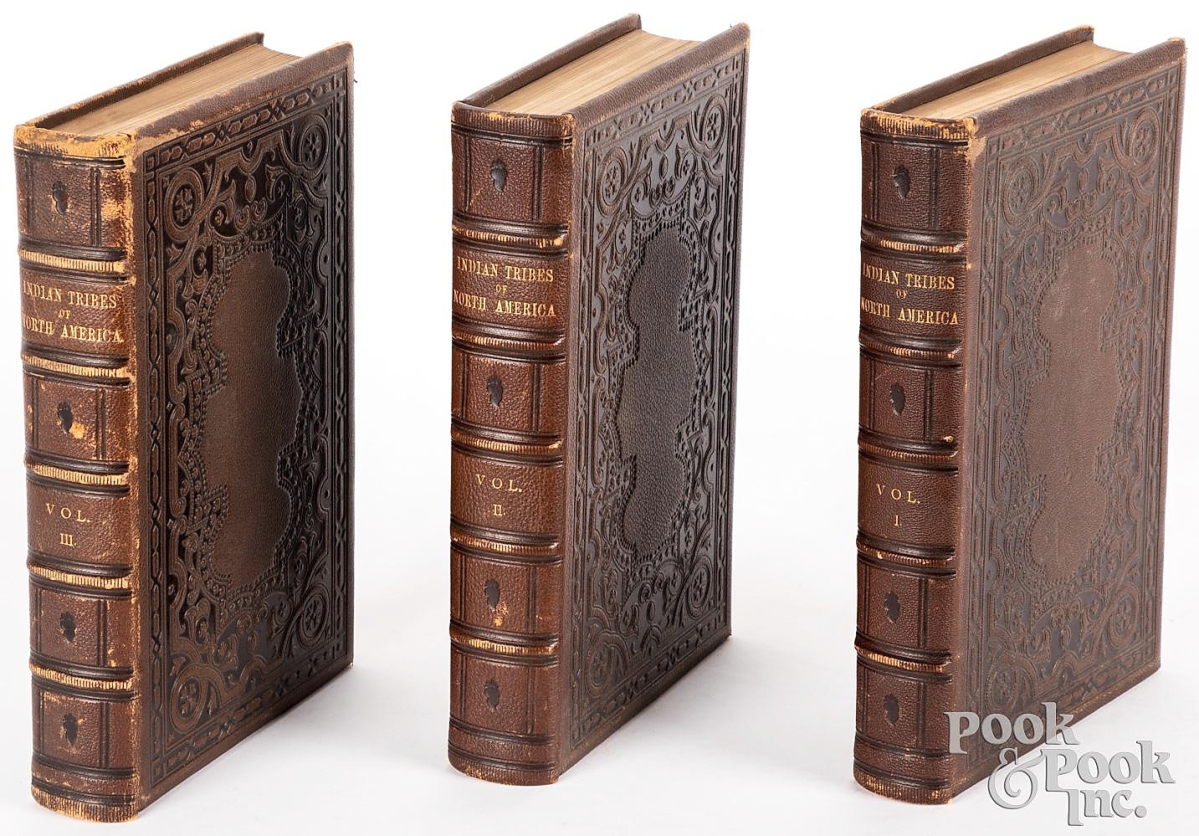
The first lot across the block comprised three volumes containing Thomas L. McKenney’s History of the Indian Tribes of North America, published in Philadelphia by Rice, Rutter & Co., 1870, and bound in embossed brown leather, which went out at $7,560.
Sir Isaac Newton’s (1643-1727) The Methods of Fluxions and Infinite Series; With Its Application to the Geometry of Curve-Lines, a first edition printed by Henry Woodfall and sold by John Nourse, 1736, was bid to $27,720. Newton first wrote Methodus Fluxionum in 1671 but the work remained unpublished until translated by John Colson. This volume bore a bookplate of William Sedgwick, B.D. Queens College Cambridge, and was bound in brown leather with embossed boards and gilt spine, marbled edges with protective box and slipcase.
Italian astronomer Galileo Galilei (1564-1642) recorded the phenomenon of sunspots on June 23, 1613, the first to observe and document them. Astronomers have been counting sunspots – the most accessible tool they’ve had to measure solar activity – for the past 400 years. Istoria E Dimostrazioni Intorno Alle Macchie Solari by Galileo, first edition, printed in Rome by Giacomo Mascardi, 1613, sold for $18,900. It contained 38 full-page engravings of sunspots, containing Galileo’s discovery and also his observation that the sun rotated on a fixed axis. Bound in vellum with old paper label on spine, the 9-by-6-5/8-inch volume had a protective cover and slip case.
In addition to early scientific books, Sparre collected rarities of important historical figures. A bidder won President Abraham Lincoln’s signature for $8,190. It was contained inside a circa 1860s US political signature collection book, appearing to belong to Postmaster General Horatio King. Other signatures included President Franklin Pierce and his cabinet, President James Buchanan and his cabinet, 1860 presidential nominees, US Senators, and the back bore signatures from international politicians, close to 350 cut signatures in total, also including six Civil War-era letters sent to Washington, all pasted into a ruled paper book with 3/4 leather binding,
The sale’s first lot across the block comprised three volumes containing Thomas L. McKenney’s History of the Indian Tribes of North America. Published in Philadelphia by Rice, Rutter & Co., 1870, and bound in embossed brown leather, with gilt spine, gilt edges and marbled end papers, the set went out at $7,560.
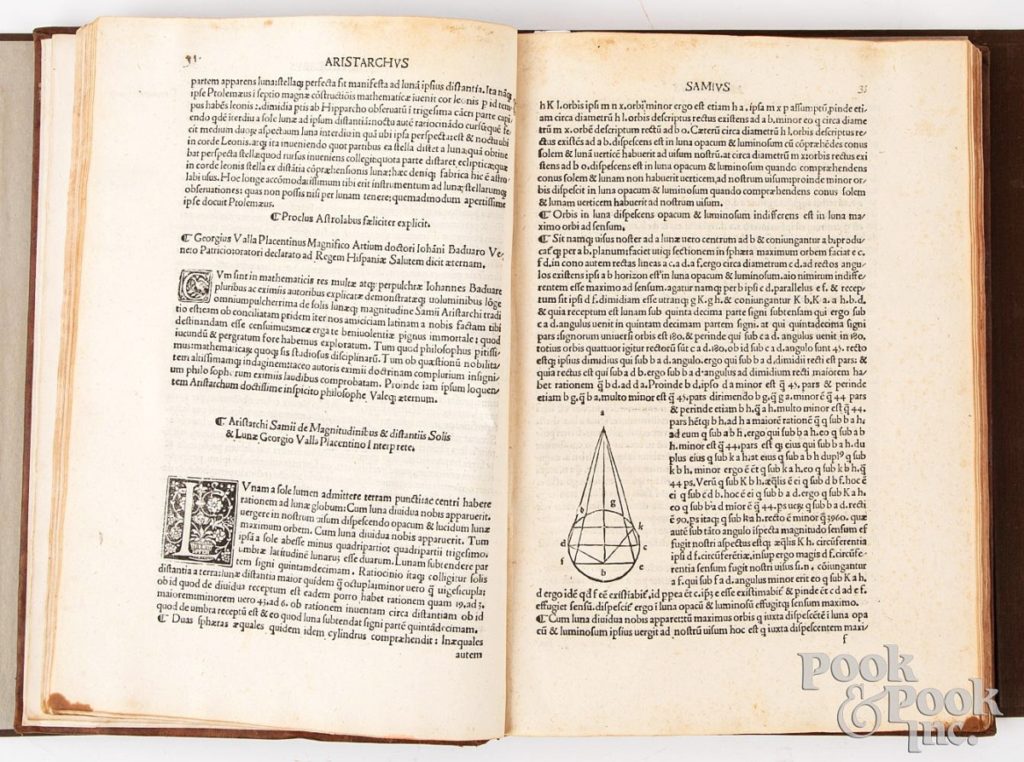
Fetching $37,800, a first edition of Georgio Valla Placentino Interprete, containing numerous translated Greek scientific texts, included the first printing of the only extant work of the Greek astronomer Aristarchus of Samos (circa 310-230 BCE).
The Romane Historie, written by T. Livius of Padua, printed in London by Adam Islip, 1600, comprised the first complete English translation of Livy’s Roman History. Realizing $6,930, it was bound in brown leather with gilt spine, marbled endpapers and a bookplate of Sir William Pole of Devonshire, and protective box with slipcase.
Finally, the first comprehensive treatise on English law, de legibus et consuetudinibus, Angliae libri quinque, first edition, by Henry Bracton, printed in London for Richard Tottell, 1569, took $6,048. Bound in brown leather with gilt decorated boards and spine, marbled endpapers, marbled edges, it had a protective tri-fold box and slip case and inside cover with label for the library of Herschel V. Jones.
Prices given include the buyer’s premium as stated by the auction house. Pook & Pook’s Americana and International sale is scheduled for October 5-7. For information, 610-269-4040 or www.pookandpook.com.

